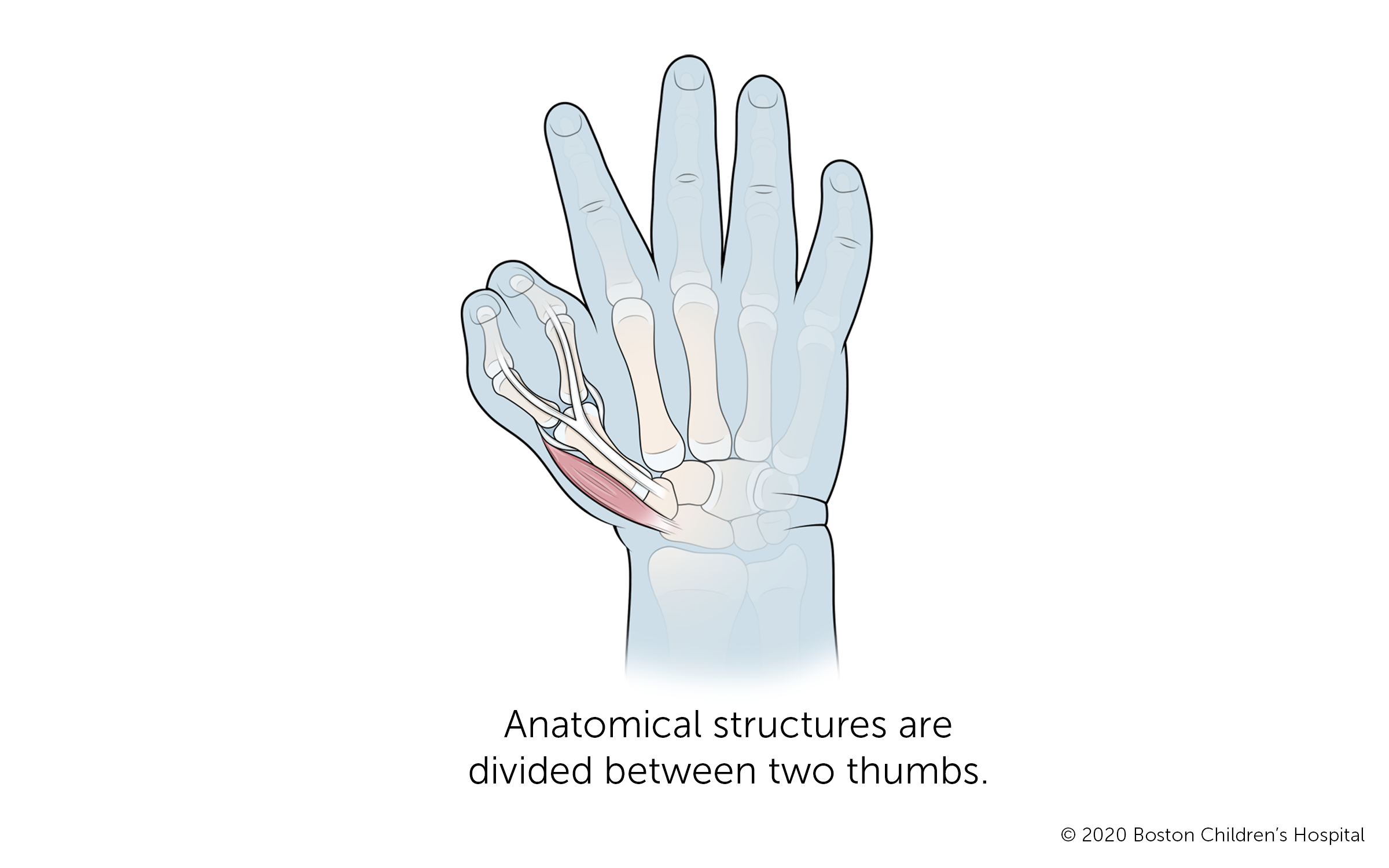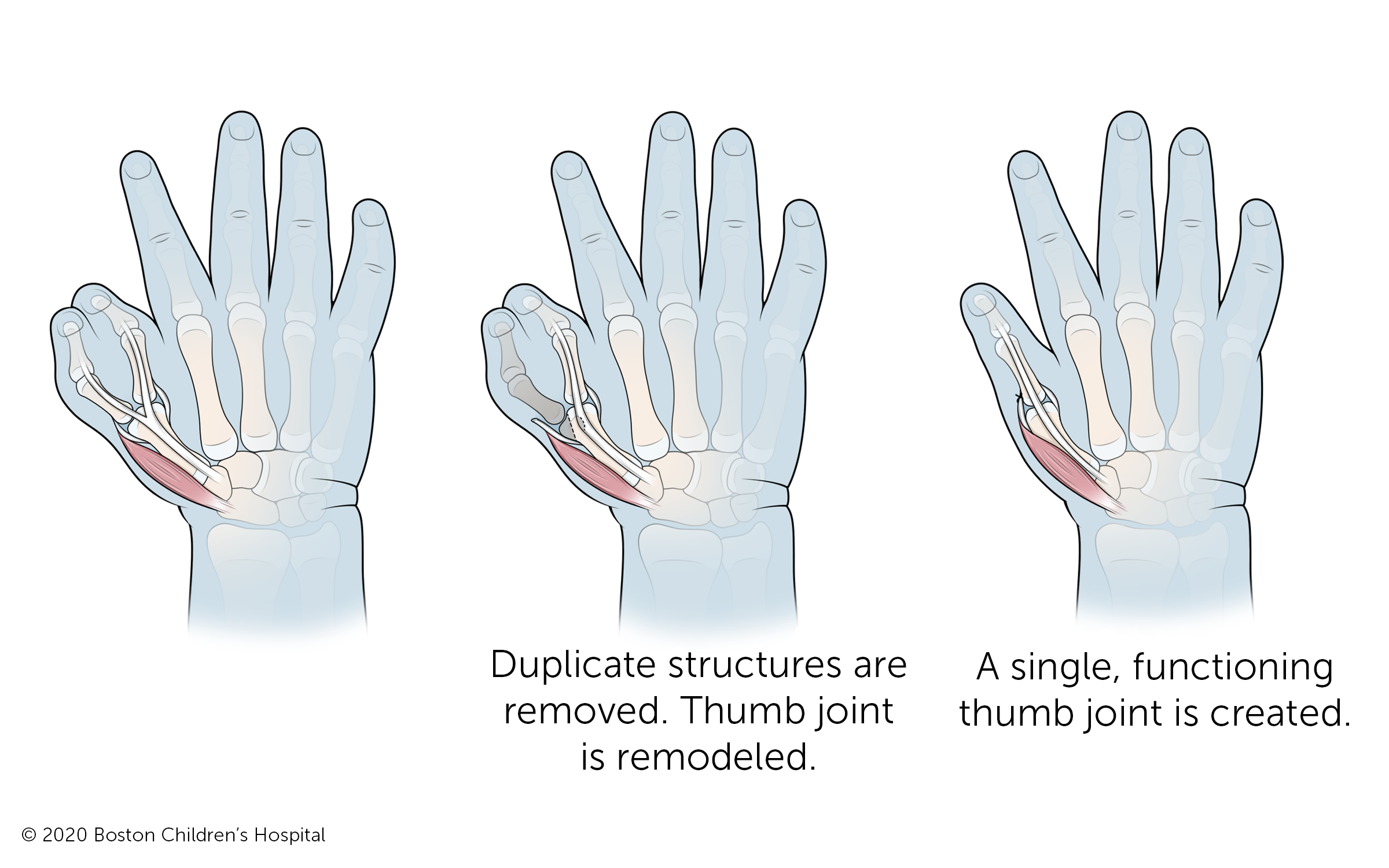Thumb Duplication (Pre-Axial Polydactyly) | Symptoms & Causes
What are the symptoms of thumb duplication?
Although it is called “thumb duplication,” the term “split thumb” would be a more accurate name. The muscles, tendons, ligaments, blood vessels, and nerves are often divided between each of the thumbs. Typically, these two thumbs are smaller and less developed than normal.

What causes thumb duplication?
The exact cause is unknown. A baby’s hand starts forming early in the first trimester of pregnancy as a “limb bud” that looks like a paddle or mitten. As development continues, the limb bud divides into fingers. A split thumb occurs when this process of division continues a little longer than normal. In most cases, this extra division happens without any known reason. In some cases, there may be a hereditary predisposition, especially if there is a thumb with three bones instead of two.
Thumb Duplication (Pre-Axial Polydactyly) | Diagnosis & Treatments
How is thumb duplication diagnosed?
A split thumb can sometimes be seen during a prenatal ultrasound. If not detected during pregnancy, the condition is visible at birth. Your baby will have x-rays at some point to see the structure of their thumbs and to decide on treatment.
How is thumb duplication treated?
Thumb duplication is treated with surgery to create a single, functioning thumb. This will probably happen when your child is about 1 to 2 years old. Surgery to correct thumb duplication can be complex. Simply removing the extra thumb is not usually enough. Each of the split thumbs has elements that need to be combined to recreate one fully working thumb.

Duplicate thumb surgery usually involves removing most of one thumb and remodeling the remaining thumb, with special attention to its soft tissues, tendons, joints, ligaments, and fingernails. After surgery, the reconstructed thumb may be smaller and work a little differently than a normal thumb.
Your child will probably wear a cast for four weeks after surgery. Once the cast comes off, your child’s doctor may recommend occupational or physical therapy to help reduce scarring and improve movement. Your child’s care team will show you exercises you can do with your child at home. Your child may need to wear a cast or splint. A small percentage of children need more operations later in life.
How we care for thumb duplication at Boston Children’s Hospital
The Orthopedics and Sports Medicine Department’s Hand and Orthopedic Upper Extremity Program and our Department of Plastic and Oral Surgery's Hand and Reconstructive Microsurgery Program have treated thousands of babies and children with thumb hypoplasia and aplasia, and other hand problems. We are experienced treating conditions that range from routine to highly complex, and can provide your child with expert diagnosis, treatment, and care. We also offer the benefits of some of the most advanced clinical and scientific research in the world.
Our Orthopedics and Sports Medicine Department is nationally known as the preeminent center for the care of children and young adults with a wide range of developmental, congenital, neuromuscular, sports-related, traumatic, and post-traumatic problems of the musculoskeletal system.
Our Department of Plastic and Oral Surgery is one of the largest and most experienced pediatric plastic and oral surgery centers anywhere in the world. We provide comprehensive care and treatment for a wide variety of congenital and acquired conditions, including hand deformities.


